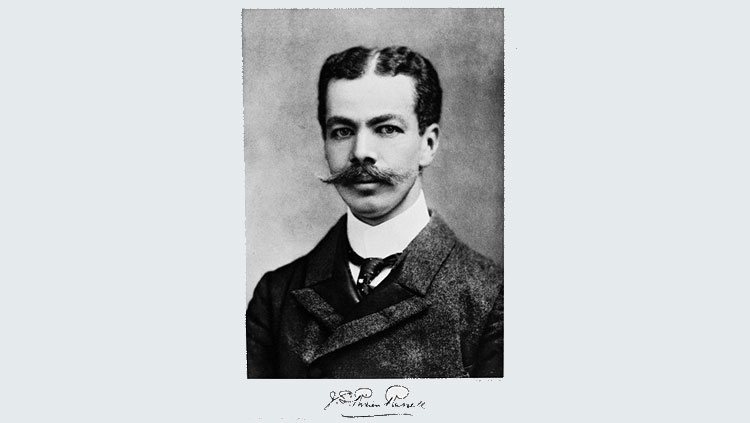Yasmin Hurd: Marijuana and the Young Brain
- Published18 Feb 2015
- Reviewed18 Feb 2015
- Author Teal Burrell
- Source BrainFacts/SfN
As a child, Yasmin Hurd always wondered how other children’s brains worked. To help pay for college, she took a job taking care of animals in a research lab, an experience that unleashed her childhood curiosity and sent her on a path to a career in research.

Originally from Jamaica, Hurd is now the Director of the Center for Addictive Disorders and a professor at the Icahn School of Medicine at Mount Sinai Hospital in New York City, where she studies addiction in people and animal models. Her animal research has revealed that drugs like marijuana can have profound effects on the adolescent brain, including effects that can even extend to the offspring of drug-users.
How did you become interested in research? Specifically, what about addiction research interested you most?
When I was in college, I took care of the animals in a research facility for work-study. I kept on asking questions about the animals and the professor finally said, “You’re asking better questions than the graduate students. Do you want to work in the lab?” And he arranged for me to continue earning money while doing research. Our research looked at the developmental effects of lead. I think part of my interest in the long-term impact of toxin exposure during development started then.
In graduate school, I studied drugs that impacted the dopaminergic system, the cells that are pathological in Parkinson’s disease. I studied the psychostimulants amphetamine and cocaine, and they were so interesting because they had a powerful influence on behavior. I became fascinated by how drugs took over a person’s life and changed behavior so profoundly.
Much of your research now focuses on marijuana. Broadly speaking, what does marijuana do to the brain?
Marijuana binds to cannabinoid receptors, which are some of the most abundant receptors in the brain. Because of this, marijuana can induce changes throughout the brain. When it binds to receptors in the cortex it can affect cognition and memory. There are also receptors in brain regions related to motor coordination and emotional regulation.
Marijuana is the most commonly used illicit drug among teenagers. What has animal research told us about marijuana’s effects on the adolescent brain, and how does that differ from what occurs in the adult brain?
The teenage brain and the adult brain definitely differ in their sensitivity to drugs. We know that the prefrontal cortex, which mediates cognition, decision-making, and impulsivity, is still developing into the mid-20s, so it’s more vulnerable to drug use during adolescence.
When we look at adult animals that have been exposed to marijuana during prenatal or adolescent development, we see that they have a greater response to reward. For example, they will self-administer heroin more, and they have greater sensitivity to other drugs. We even did studies that looked at the adult offspring of drug-exposed animals. The offspring themselves were not exposed to marijuana, but they have impaired reward motivation and increased anxiety and compulsive behaviors. So there are long-term developmental effects and now our studies even show that there are cross-generational effects.
What do you think about the growing public policy debate around marijuana in the United States?
I think that is challenging for us because, ironically, there’s not that much research on marijuana even though there’s such significant use of marijuana in the United States. We know from our animal work that there are long-term developmental effects of marijuana and even cross-generational effects. So I feel that efforts to legalize marijuana are rushing, without significant research into this topic. My concern really is about the developing brain and marijuana exposure and there we don’t have enough research to say that this drug really is benign. It’s clearly not benign. We need more research.
What are you currently working on?
We’re following up on our cross-generational study of marijuana use to look at how many generations it extends to on a behavioral and molecular level in the brain. Another project looks at cannabidiol, another cannabinoid in the marijuana plant. THC is the cannabinoid that produces the reward and exacerbates sensitivity to other drugs; it increases the chances of heroin self-administration in our animal models, but cannabidiol actually decreases heroin-seeking behavior. The interesting thing about cannabidiol is that the marijuana on the streets today is practically devoid of it. Compared to a few decades ago, the marijuana available today contains more THC and much less cannabidiol. Our current research is looking at whether this cannabinoid in marijuana could be an effective treatment to help heroin addicts quit. We’re now doing clinical trials.
What do you hope will come out of this research?
Substance abuse has such a huge impact on our communities, on the individual, their families, on the economy of the US. If we can understand the neurobiology, we can come up with more targeted treatments. Currently, addiction has limited treatments. I think the stigma of addiction has really prevented people from fully supporting research to explore the disease and really understand that we need to help these individuals. What drives me is that our research contributes to understanding how the adolescent brain is more vulnerable to different types of substances and how that information can help prevent abuse and develop more targeted treatments.
CONTENT PROVIDED BY
BrainFacts/SfN
Also In Meet the Researcher
Trending
Popular articles on BrainFacts.org


















